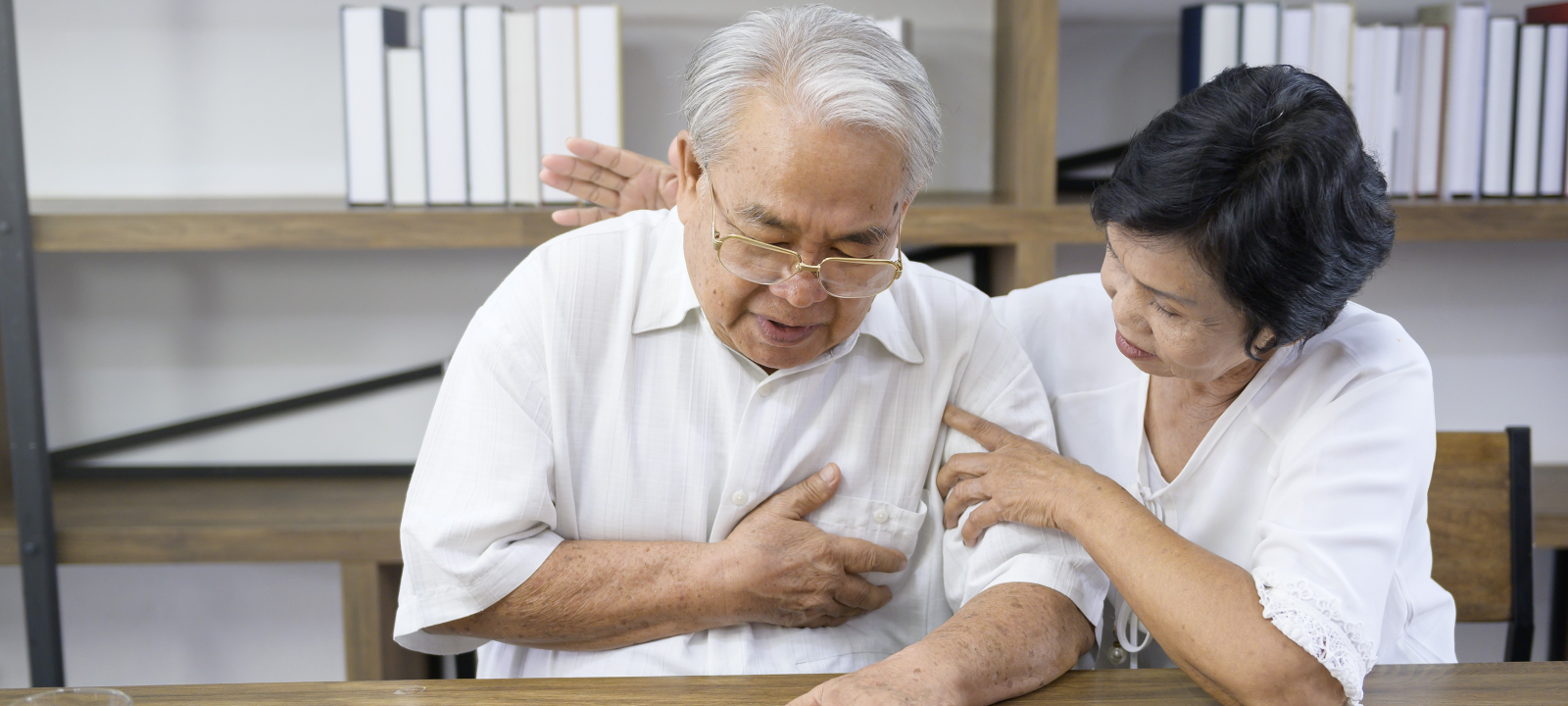A stroke is often life-changing, but its effects don’t stop at mobility or speech and include Sex After Stroke and their relationship with their partner. For many, this is an unexpected and deeply personal challenge that isn’t always discussed during recovery. Yet, understanding how a stroke can influence your relationship is the first step toward finding solutions and regaining closeness.
Imagine intimacy as a shared dance. After a stroke, the rhythm of that dance may feel unfamiliar, but it doesn’t mean you and your partner can’t find a new tempo that works for you. For some, the physical effects of a stroke, like muscle weakness or reduced sensation, can make sexual activity feel different. For others, the emotional toll—such as anxiety, frustration, or even a loss of confidence—may create barriers to intimacy.
Understanding How Stroke Affects the Body
The physical effects of a stroke can be one of the most noticeable challenges when it comes to intimacy. These changes might feel frustrating at first, but understanding them can help you and your partner adapt and find new ways to connect.
For starters, stroke survivors often experience muscle weakness, which can affect movement and stamina during intimacy. This might mean that positions or activities that were once comfortable now feel difficult or even impossible. But don’t let this discourage you—it’s simply a chance to explore alternatives that suit your new abilities. Many couples find that using cushions for support or experimenting with less strenuous positions can make all the difference.
Another common change is how the body feels touch. Some people notice a loss of sensation in certain areas, while others may experience heightened sensitivity. Either way, this can make intimacy feel different than before. Take time to rediscover what feels good, and don’t be afraid to communicate these changes with your partner.
Fatigue is another factor that can play a big role. A stroke often leaves survivors feeling tired more easily, which can make the idea of physical intimacy seem daunting. The key here is timing. Intimacy doesn’t have to happen at the end of a long day—try scheduling moments of closeness during times when your energy levels are at their peak, such as in the morning or after a rest.
Finally, there’s the challenge of incontinence, which can be a source of anxiety for some stroke survivors. If this is a concern, simple steps like using waterproof sheets or emptying your bladder beforehand can help you feel more relaxed and in control.
These changes might feel like roadblocks at first, but with a little creativity and understanding, they can become opportunities for growth.
The Emotional Side of Things
A stroke doesn’t just affect the body; it can deeply influence emotional and mental well-being, which plays a huge role in intimacy. Many people find themselves grappling with a mix of emotions—grief, frustration, fear, or even embarrassment—when it comes to their changed abilities. These feelings can create emotional distance in a relationship, making it harder to feel connected to a partner.
Self-confidence often takes a hit after a stroke. Changes in appearance, mobility, or how the body works might make someone feel less attractive or desirable. It’s normal to have these feelings, but it’s important to remember that your worth isn’t defined by physical changes. Partners are often more understanding and compassionate than we expect. Talking openly about how you feel can bring you closer and ease the pressure of unspoken worries.
Anxiety and fear are also common hurdles. Some people worry that engaging in sexual activity might trigger another stroke, while others feel overwhelmed by the idea of intimacy in a changed body. The good news? These fears, while valid, are often unfounded. Most healthcare professionals assure that sex is safe after a stroke for the vast majority of survivors. Talking to a doctor or therapist can help ease these concerns and provide reassurance.
Depression can also make intimacy feel out of reach. After a stroke, feelings of sadness or hopelessness can lower libido or make the idea of closeness seem like too much effort. If this resonates, seeking support from a counsellor or joining a stroke survivor group can help you process these feelings and move forward.

Taking the First Steps Toward Intimacy
Rebuilding intimacy after a stroke doesn’t mean jumping straight back into sex. It’s about taking small, meaningful steps that help you reconnect with your partner on an emotional and physical level. Think of it as creating a new path together, one step at a time.
Start with simple, non-sexual gestures that remind you of the closeness you share. Holding hands, cuddling, or even sitting together quietly can help re-establish a sense of connection. These moments might seem small, but they create a foundation of trust and comfort that makes deeper intimacy easier to explore later.
Talking openly with your partner is one of the most important steps. Share how you’re feeling—your hopes, fears, and any worries about intimacy. Encourage your partner to do the same. It’s okay to feel nervous or unsure; what matters is that you’re tackling these feelings together. Honest communication builds understanding and strengthens your bond.
Patience is key during this process. It’s natural for intimacy to look and feel different after a stroke, and that’s okay. Rushing to “get back to normal” can create stress or frustration. Instead, focus on celebrating small victories, like a moment of laughter or a meaningful hug. These milestones are just as important as physical progress.
Physical Intimacy in New Ways
After a stroke, physical intimacy might feel different, and that’s perfectly okay. It’s about finding what works for you now and creating new ways to connect with your partner. This process may take time, but it can also be an opportunity to deepen your bond and rediscover what intimacy means.
Touch is a powerful way to reconnect. Spend time exploring what feels good—this could mean gentle massages, holding each other close, or even experimenting with new types of touch. A stroke may alter sensations, but it also opens the door to discovering parts of your body you might not have thought of as erogenous before. By keeping the focus on exploration, you can turn intimacy into a shared journey.
Finding positions that work for your body is another important step. Some positions that used to feel natural might now be uncomfortable or too physically demanding, and that’s okay. Start by experimenting with simple, supported positions—lying side by side, for instance, can be less tiring and just as intimate. Use pillows or cushions to make yourself more comfortable, and remember, it’s all about what feels right for both of you.
Timing also plays a big role. Fatigue is common after a stroke, so plan intimate moments for times when you feel rested and relaxed. For some people, mornings are better, while others might find that after a nap works well. The key is to listen to your body and communicate openly with your partner about what feels best.
When to Seek Extra Support
Sometimes, rebuilding intimacy after a stroke requires a little outside help—and that’s nothing to be ashamed of. Support from professionals or community groups can provide guidance, reassurance, and practical tips that make all the difference.
Talking to your doctor is a great first step. They can address any medical concerns you might have, such as whether it’s safe to engage in sexual activity or how to manage physical challenges like incontinence or erectile difficulties. Your doctor might also recommend treatments, therapies, or devices to improve your comfort and confidence.
A sex therapist can be another valuable resource. These professionals specialize in helping people navigate intimacy issues, including those related to physical or emotional challenges after a stroke. They can guide you and your partner through practical strategies, new techniques, and ways to rekindle desire and connection.
Support groups for stroke survivors and their families can also be incredibly helpful. Hearing from others who’ve faced similar challenges can make you feel less alone and provide fresh ideas for overcoming obstacles. Whether it’s online forums or local meetups, these communities can be a safe space to share experiences and find encouragement.
Debunking Myths About Sex After Stroke
It’s common for stroke survivors to worry that sexual activity might trigger another stroke. This concern can create unnecessary anxiety. The truth is that, for most people, sex is safe and carries no greater risk than other moderate physical activities, such as walking or climbing stairs. According to the American Stroke Association, intimacy can be part of a healthy recovery once cleared by a healthcare provider.
Scientific studies support this reassurance. For example, research published in Stroke and Cerebrovascular Diseases found no evidence linking sexual activity to a higher risk of recurrent strokes in most survivors. This conclusion highlights the importance of accurate information. People cleared for physical activity by their doctor can generally enjoy intimacy without fear.
Misconceptions about desirability after stroke are also widespread. Physical changes or limitations can lead survivors to feel less attractive. However, studies like one from the Journal of Health Psychology reveal that intimacy is about more than physical traits. Couples who communicate openly often report stronger emotional bonds after working through post-stroke challenges together.
Medications and Their Role in Sexual Health
Medications are essential for managing conditions like high blood pressure and depression after a stroke. However, they can sometimes cause issues with sexual health. Beta-blockers, for instance, are known to reduce libido or cause fatigue. Similarly, antidepressants like SSRIs may delay orgasm or dampen arousal. These side effects, while frustrating, are manageable.
Talking to your doctor is a vital first step. Adjusting your dosage or switching to alternatives, such as angiotensin receptor blockers (ARBs), can help. A 2018 review in the International Journal of Cardiology found that ARBs improved sexual function in men with erectile dysfunction while supporting vascular health. Such alternatives may offer a better balance between recovery and intimacy.
Lifestyle changes also play an important role in improving sexual health. According to the National Institutes of Health (NIH), regular exercise, a balanced diet, and quitting smoking enhance circulation and energy levels. These improvements not only benefit sexual performance but also support overall recovery.
Some people consider natural remedies like ginseng or L-arginine to address sexual dysfunction. While promising, these supplements should only be used under medical supervision. They can interact with medications or pose risks for stroke survivors.
Getting to Know Yourself Again
After a stroke, many people find that their relationship with their body has changed. Things that once felt natural may now feel unfamiliar, and this can affect how you approach intimacy. However, this period of rediscovery is an opportunity to reconnect with yourself, both physically and emotionally.
Exploring what feels good is a key step. After a stroke, areas of the body may have heightened sensitivity or reduced sensation. Spending time alone, touching, and experimenting with gentle pressure or textures can help you understand these changes. For example, using soft fabrics or warm water can awaken new sensations. Rediscovering your body isn’t about rushing; it’s about finding joy in the process.
Self-pleasure can also be a valuable part of recovery. Masturbation allows you to explore your comfort levels without the added pressure of a partner. It helps you rebuild confidence in your ability to experience pleasure and can guide conversations about intimacy when you’re ready to share those discoveries with your partner. Research published in the Journal of Sexual Medicine emphasizes that self-exploration plays a crucial role in regaining sexual confidence after major life changes.
Equally important is emotional self-awareness. Journaling or mindfulness exercises can help process feelings about your body and its changes. A positive mindset can transform your outlook, allowing you to approach intimacy with curiosity instead of fear.
Overcoming Physical Barriers Together
Physical changes after a stroke can make certain activities, including intimacy, more challenging. Limited mobility, muscle weakness, or spasticity might mean adapting to new ways of being close. The good news is that with creativity and teamwork, these barriers can be overcome.
Supportive positioning can make a significant difference. Using cushions or wedges to stabilize your body can provide comfort and reduce strain. For example, lying side by side or trying seated positions can minimize effort while maximizing closeness. Many stroke survivors find that experimenting with different setups leads to greater satisfaction.
Strengthening exercises tailored to your abilities can also improve your physical confidence. A physical therapist can recommend gentle routines to build strength and flexibility, which may enhance both daily mobility and intimacy. A 2020 study in Rehabilitation Research and Practice highlights that even small gains in physical fitness can improve sexual function and overall quality of life.
Communication is just as important as physical adaptations. Share your needs and limitations with your partner so they understand what feels comfortable. Intimacy should be a collaborative process, with both partners finding ways to connect that suit their unique situation. This openness can deepen emotional intimacy as well.
Consider tools or aids designed for sexual health. Devices like supportive cushions, lubricants, or vibrators can enhance comfort and pleasure. If you’re unsure where to start, discussing options with a healthcare provider or exploring products through trusted resources can be helpful.
Emotional Intimacy
A stroke doesn’t just affect physical health; it can also create emotional distance between partners. Adjusting to changes in roles and responsibilities can feel overwhelming, particularly if one partner takes on caregiving duties. However, rebuilding trust and emotional closeness is essential for creating an environment where intimacy can thrive again.
One of the first steps is to focus on open, honest communication. Talk about your fears, frustrations, and hopes for the future. Sometimes, simply acknowledging the challenges you’re facing can reduce tension. A study published in the Journal of Marital and Family Therapy shows that couples who regularly discuss their feelings tend to maintain stronger emotional connections, even during difficult times.
Nurture non-sexual forms of affection. Holding hands, sharing a heartfelt conversation, or simply enjoying quiet time together can reinforce your bond. These small gestures act as reminders of the love and support you share, laying the groundwork for rebuilding intimacy.
As you rebuild trust, be patient with yourself and your partner. Emotional recovery doesn’t happen overnight, but taking small, consistent steps will create a stronger foundation. Consider couples’ therapy if you find it difficult to navigate this process alone. A trained therapist can help identify communication barriers and guide you toward a deeper connection.
Supporting Your Partner Through This Journey
If your partner has experienced a stroke, you play a vital role in their recovery. Offering support while maintaining your own emotional health is key to navigating this journey together. Understanding their challenges and being patient can make all the difference.
Start by creating an environment of open dialogue. Ask your partner how they feel about intimacy and what their fears or needs might be. Acknowledge that this is a shared experience and that rebuilding closeness takes time. Encouraging open conversations not only eases your partner’s worries but also strengthens your emotional bond.
Educate yourself about the effects of stroke. Knowing what your partner might be going through—whether it’s physical fatigue, altered sensation, or changes in confidence—can help you approach intimacy with empathy. Resources like the National Stroke Foundation or support groups for caregivers provide practical advice and emotional support.
Being a caregiver can be demanding, and neglecting your own needs can lead to burnout. Take time for activities that rejuvenate you, whether that’s exercise, hobbies, or connecting with friends. A healthy, balanced caregiver is better equipped to offer love and patience.
Focus on shared experiences that bring joy to both of you. This might mean watching a favorite movie, cooking together, or taking a relaxing walk. These moments help remind you that your relationship is built on more than physical intimacy.

Practical Tips for Enhancing Physical Comfort During Intimacy
After a stroke, physical limitations like muscle weakness or reduced mobility can make intimacy feel daunting. However, adapting your approach can make a big difference in comfort and enjoyment. Here are some practical steps to consider:
Experiment with Supportive Positions:
- Intimacy doesn’t have to involve physically demanding positions. Try lying side by side, where both partners are supported by pillows. This reduces strain on muscles and makes it easier to stay close.
- If sitting is more comfortable, consider using a sturdy chair or sofa for support. A simple adjustment like this can reduce physical fatigue and keep the focus on connection.
Use Cushions or Positioning Aids:
- Many specialty cushions, like wedge-shaped pillows, are designed to provide stability and support. These can be purchased online or at medical supply stores. For instance, using a cushion under the hips can elevate certain areas, making intimacy easier.
- Everyday household items can also work. Rolled towels or regular cushions are great for propping up legs or supporting the back.
Time Intimacy Wisely:
- Fatigue is common after a stroke, so schedule intimacy for times when energy levels are highest. For some, this might be in the morning or after a refreshing nap.
- Communicate with your partner about what timing feels best for both of you. Sharing this planning process can build anticipation and strengthen emotional bonds.
Everyday Tip: Test different positions during non-intimate moments, such as while watching TV or relaxing together. This can take the pressure off and make finding comfortable setups more fun and collaborative.
Touch and Sensory Exploration
A stroke can alter how the body experiences touch, making it essential to focus on rediscovery. Here’s how to explore sensory connection in a way that feels new and exciting:
Try Non-Traditional Erogenous Zones:
- Sensations may change post-stroke, but this creates an opportunity to discover new areas of pleasure. Spend time exploring with soft, gentle touches, paying attention to unexpected responses.
- Use different textures, such as a silk scarf, soft bristles, or even warm water, to add variety and awaken new sensations.
Massage as a Prelude to Intimacy:
- A slow, intentional massage can relax tense muscles and foster connection. Start with areas that feel tight or fatigued, like shoulders or legs, and gradually transition to more intimate touch.
- Using a warm, unscented oil can make touch smoother and more enjoyable. Focus on communication, asking what feels good and adjusting as needed.
Incorporate Temperature Play:
- Simple variations in temperature can heighten sensory responses. A cool metal spoon or a warm compress applied gently to the skin can feel stimulating.
- Test this out during casual moments, like holding a cold drink against your partner’s wrist or sharing a warm bath.
Everyday Tip: Spend 10–15 minutes before bed each night exploring non-sexual touch. It could be as simple as holding hands or running fingers over each other’s arms. This builds trust and deepens the connection over time.
Intimacy Through Everyday Habits
Intimacy isn’t only about physical connection; it’s also deeply tied to emotional closeness. Here are ways to nurture that connection daily:
Make Time for Uninterrupted Conversations:
- Set aside time each day to talk about anything other than recovery. Share your thoughts, dreams, or even laugh about something silly. These moments remind both partners of the bond beyond physical challenges.
- Keep distractions at bay—no phones, TVs, or interruptions. Simply being present creates a sense of closeness.
Celebrate Small Wins Together:
- Whether it’s a new physical achievement or a particularly good day, take time to acknowledge and celebrate progress. Sharing pride in each other’s victories strengthens the relationship.
- Try marking these moments with a special ritual, like making a favorite meal or taking a photo together.
Engage in Shared Activities:
- Choose low-pressure activities that you both enjoy, such as cooking, gardening, or listening to music. Shared experiences foster connection and lay the groundwork for physical intimacy.
- If mobility is limited, consider seated activities like puzzles or painting. The key is finding joy in being together.
Everyday Tip: Create a gratitude journal where you each write one thing you appreciate about the other every day. Reading these entries together can reignite affection and appreciation.

Risetob is a sex toy reviewer sharing honest, detailed insights to help readers choose products that feel good, work well, and are worth the money.



Leave a Reply